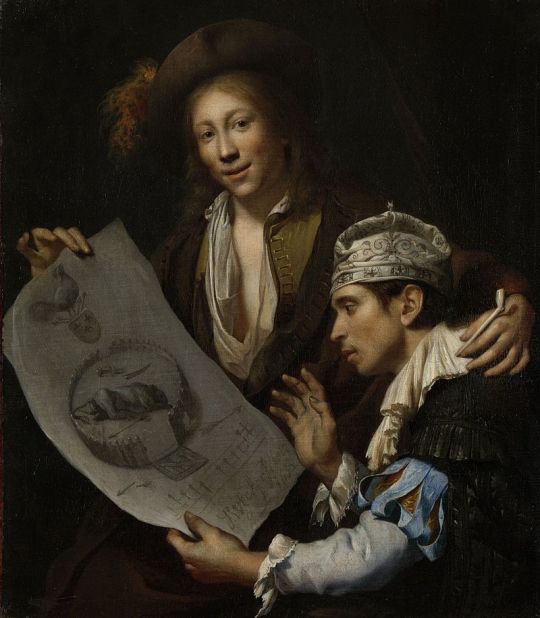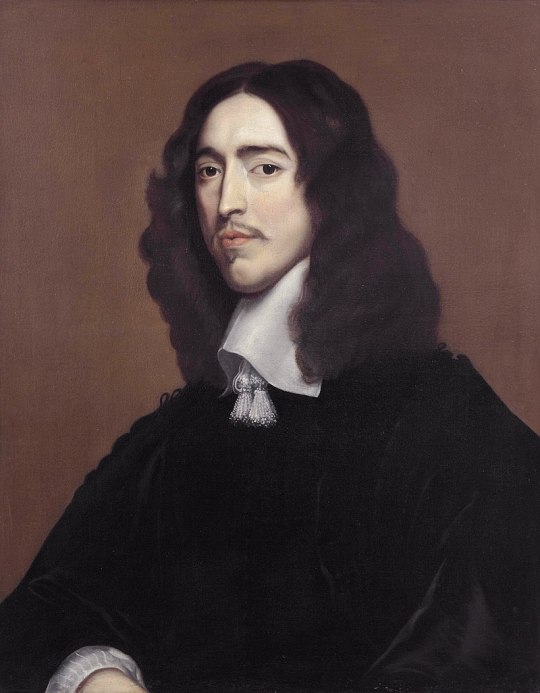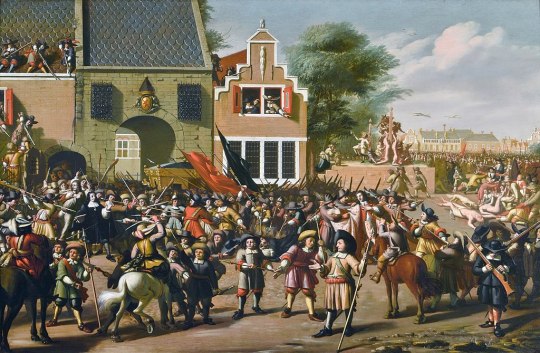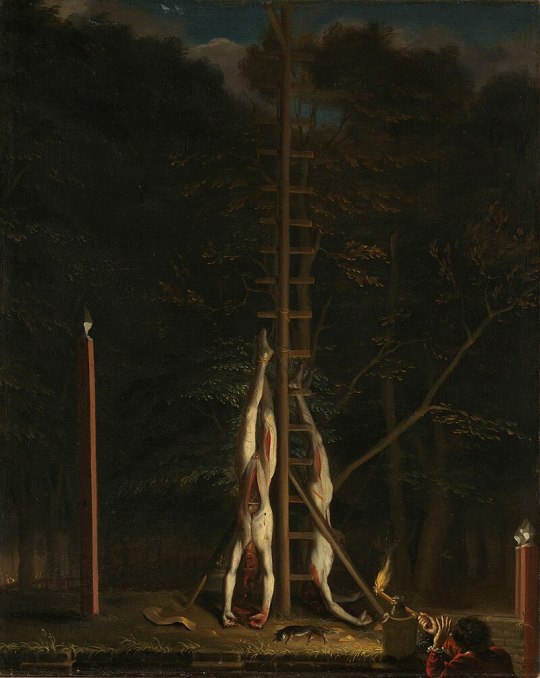#Rampjaar
Explore tagged Tumblr posts
Text
Als enige Nederlandse kunstenaar in de collectie van het Italiaanse Museo delle “Brocche d’Autore”
In keramiekstad Gubbio zijn nu 3 brocche, 3 kruiken, van mij opgenomen in de museumcollectie, gewijd is aan de Ceri. De eeuwenoude, religieuze happening die in heel Italië bekend is. Een heel grote eer om daar als Nederlands kunstenaar bij te mogen horen.
de uitnodiging voor de expositie met rechtsonder mijn naam Drie heiligen en dus ook drie brocche, drie kruiken. Drie brocche van mij, die nu staan te pronken in dat Museo delle “Brocche d’Autore”, het Museum van de “Kruiken Ontwerpers”. Drie brocche gewijd aan Sant’Ubaldo, San Giorgio en Sant’Antonio. Ubaldo, de beschermheilige van de stad Gubbio, gekoppeld aan de kleur geel. Joris, martelaar…

View On WordPress
#15 mei#brocche#ceri#corona#Covid-19#Giampietro Rampini#Gubbio#heiligen#Italië#keramiek#kruiken#Middeleeuwen#Museo Civico di Palazzo dei Consoli#Museo delle Brocche d’Autore#Palazzo dei Consoli#Piazza Grande#Rampini Ceramiche d’Arte#Rampjaar#San Giorgio#sant’Antonio#Sant’Ubaldo#Sint Antonio van Egypte#Sint Joris#Umbria#Umbrië#UOVO-Project
1 note
·
View note
Text
The original post is extremely fake as anyone knowing anything about french history (and that includes Macron) knows.

I'm sorry what the fuck did you just say ??? This has to be fake.
#napoleon anyone?#and then there was the time France England and Germany banded together to invade the Netherlands (google rampjaar if your curious)#and the franco Prussian war of 1870#France also sponsored the American revolution
54K notes
·
View notes
Note
Did you know that after the Franco-Dutch war of 1672, mass hysteria know as the Rampjaar led to Dutch mobs assassinating their prime minister and then publicly roasting and eating him?
I did not know that, very interesting
2 notes
·
View notes
Text
The Wrath of Rampjaar: The Death and Destruction of Johan De Witt
The 1600s was a difficult chapter for human life. All over the world wars tore at the seams of land and families, and those that did not fall in battle found themselves vulnerable to falling from disease and plague brought on by forces that could not yet be understood. Many things that could not be explained resulted in further violence, fanaticism, death, and destruction dealt from one hand only to be horrifically felt by the other. Breakthroughs in science, exploration, and the arts collided with religious extremism and prejudice as humanity as a whole spun on, seemingly with chaos in every corner.
The Netherlands were one part of the world with turmoils erupting within their borders. In 1672 the country formerly known as the Dutch Republic was seeing the end of the “Dutch Golden Age” with simultaneous wars with England, France, and two German cities. The year 1672 would enter the history books as the Rampjaar, The Disaster Year. The Dutch people coined a phrase to describe this most unfortunate time: “The people were irrational, the government helpless, and the country beyond salvation.”

Allegory of the Disaster Year by Jan van Wijckersloot (1673). Image via Wikipedia.
Although it was obvious there were multiple problems facing the Dutch Republic in the 1672, some believed the problems took root decades earlier. William II Prince of Orange died of smallpox in 1650 leaving the Dutch with no official leader (referred to as a Stadholder.) It was this same year that Johan De Witt began to make his mark in the politics of the region. Johan’s family were bitter rivals of the Oranges and as De Witt began to move up the political ladder he allegedly (with the help of his powerful father who spent time in prison for his involvement in a coup d'etat of William II) quietly made moves and had words written into political documents to keep the young William III or any member of the Orange family from ruling. This allowed wheels to be set in motion to form a fully Republican regime with De Witt at the helm. After holding a number of high-standing positions he was elected to the role of Grand Pensionary of Holland in 1653, essentially making him the ruler of all Dutch provinces.
By the time the 1672 Year of Disaster loomed over the Dutch Republic the people had already endured enough war and horror to last a lifetime under the eye of Johan De Witt. There were the Anglo-Dutch Wars which threatened the land, but De Witt remained focused on the sea, taking every step possible to protect the economic interests in shipping and trading that filled his pockets while paying little mind to the forces surrounding the Dutch at their front doors. He also made it a point to delay the appointment of William III as captain general. The stubbornness of De Witt would have deep consequences when in May 1672 Louis XIV invaded the Dutch Republic, thus beginning the third Anglo-Dutch War.

Portrait of Johan De Witt by Adriaen Hanneman (1652). Image via Wikipedia.
As troops moved straight into the heart of their homeland the exhausted Dutch people felt betrayed by their leadership and all eyes turned to Johan De Witt. Some were content to simply, but loudly, voice their opinions that the House of Orange should take back their power by any means necessary. Others showed their feelings of anger and betrayal in much more aggressive ways. On June 21st 1672 Johan De Witt was attacked by a man who was armed with a knife and an intent to kill. The assailant did succeed in brutally stabbing him, but he survived. Johan’s brother Cornelis was also feeling the pressure of the simmering public and on July 24th he was arrested under charges of treason against the House of Orange. He was brought to prison in The Hauge where he was tortured in order to obtain a confession. While his brother was recovering from being nearly assassinated, Cornelis was refusing to confess to any wrongdoing and was eventually sentenced to exile.
Being attacked with a malicious blade changed De Witt and after a lengthy recovery he resigned from his position on August 4th 1672. At the time of his resignation his brother Cornelis was still wallowing in prison with his exile looming. On August 20th Johan visited his brother at the prison to assist him and see him off on what was supposed to be his date of forever departure from his homeland. It is unknown what the pair discussed that day, but it is almost certain they had no clue what was about to happen. Yes, Johan resigned and Cornelis was exiled, but the Dutch people were not ready to let the brothers walk peacefully away into a new chapter while they were left with suffering and debt that could follow them for generations. As the brothers talked in the prison they were attacked by a mob that were set on tearing them limb from limb.

The Murder of the de Witt Brothers by Pieter Fris. Image via Wikipedia.
What unfolded was a scene that was feral, ferocious, and that has gone down in history through eyewitness accounts and multiple pieces of art. The mob ravaged the De Witt brothers. They were dragged into the street, shot, stripped of their clothing, and taken to the public gallows. If the brothers thought their end would be found in a broken neck at the end of a hangman’s noose they were terribly wrong. Once strung up the mob began to take souvenirs. Some accounts report that their eyes were stolen, others say they were later cut into pieces and distributed to the masses, and while that is up for debate one thing that is certain is that their bodies were sliced open, their livers stolen, and the organs were then roasted and consumed by those in attendance. After a lifetime of prestige and twenty years in power, Johan De Witt departed life alongside his brother after being mutilated and cannibalized by his own countrymen.

The Corpses of the De Witt Brothers by Jan de Baen. Image via Wikipedia.
With De Witt gone power went to William III of Orange, the same man who had his appointment as captain general stalled by De Witt and the son of William II whose death was used by De Witt and his father to make the turn to the Republican force that they hoped would keep the House of Orange out of power for good.
Whether William III had a hand in planning the attack and death of the De Witt brothers is debated to this day with answers unknown.
Today the prison where the De Witt brothers spent their last moments on earth still stands and has been repurposed as a history and art museum.
**********************************************
Sources:
That Time the Dutch ate their Prime Minister by Vlad Moca-Grama. DutchReview.com, March 3rd 2023. https://dutchreview.com/culture/dutch-history-crowds-ate-prime-minister/
A Dark and Stormy Bite: That Time a Bunch of Dutch People ate Their Prime Minister by Lillian Stone. TheTakeout.com, January 15th 2021. https://thetakeout.com/a-dark-and-stormy-bite-that-time-a-bunch-of-dutch-peop-1846044366
Johan De Witt. Encyclopedia.com.https://www.encyclopedia.com/history/encyclopedias-almanacs-transcripts-and-maps/johan-de-witt
#husheduphistory#featuredarticles#history#forgottenhistory#strangehistory#weirdhistory#tragichistory#historyclass#truestory#truth is stranger than fiction#DutchHistory#NetherlandsHistory#JohanDeWitt#ShockingHistory#horrorhistory#sadstory#HollandHistory
4 notes
·
View notes
Text

De Hollandse Waterlinie aan het fietsen en daarom gekozen voor een boek wat hier raakvlakken mee heeft: “Rampjaar 1672” van Luc Panhuysen. Het jaar 1672 staat in de Nederlandse geschiedenis gegrift als het Rampjaar. In dat jaar werd de Republiek overrompeld door een gecombineerde aanval van de Franse koning, de Engelse koning en de bisschoppen van Münster en Keulen. Sinds de Romeinen had Europa geen groter leger aanschouwd; het laatste uur voor de Republiek leek aangebroken. Hoe kwam het dat het land toch overleefde?
Aan de hand van de belevenissen van het gezin Van Reede - een vader, een moeder en hun zoon - laat Luc Panhuysen zien hoe de dagelijkse praktijk eruitzag, maar ook hoe de Republiek zichzelf opnieuw uitvond.
De correspondentie van deze drie gezinsleden behoort tot de mooiste die uit de zeventiende eeuw is overgeleverd. Rampjaar 1672 beschrijft op indringende wijze de grootste crisis van de Gouden Eeuw, een jaar van zeventien maanden waarin Nederland ‘redeloos, radeloos, reddeloos’ heette
1 note
·
View note
Text
[ID: A map of europe
The countries are marked in 4 colours
Green: Haven't eaten their prime minister
Red: Have eaten their prime minister
Yellow:Never had a prime minister
Gray: No data
The Netherlands is red, Switzerland is yellow, greenland is gray and the rest of europe is green
/END ID]

60 notes
·
View notes
Text
In Dutch history, few events are as shocking and brutal as the deaths of Johan and Cornelis de Witt, two of the most prominent statesmen of the 17th century Dutch Republic. Their demise in 1672, during a period aptly termed the “Rampjaar” or “Disaster Year,” was not just a personal tragedy but also a pivotal…
#17thCenturyNetherlands#CornelisDeWitt#DutchGoldenAge#DutchHistory#DutchRepublic#EuropeanHistory#HouseOfOrange#JohanDeWitt#politicalAssassination#politicalTurmoil#Rampjaar1672#WilliamIIIofOrange#frnwh
1 note
·
View note
Photo

Jan Wyck - The French Army crossing the Rhine, 12 June 1672 -
oil on canvas, Height: 196.7 cm (77.4 in) Edit this at Wikidata; Width: 515 cm (16.8 ft)
Royal Collection of the United Kingdom
In Dutch history, the year 1672 is referred to as the Rampjaar (Disaster Year). In May 1672, following the outbreak of the Franco-Dutch War and its peripheral conflict the Third Anglo-Dutch War, France, supported by Münster and Cologne, invaded the Dutch Republic, and it was nearly overrun. At the same time, it faced the threat of an English naval blockade in support of the French endeavor, though that attempt was abandoned following the Battle of Solebay. A Dutch saying coined that year describes the Dutch people as redeloos ("irrational"), its government as radeloos ("distraught"), and the country as reddeloos ("beyond salvation"). The cities of the coastal provinces of Holland, Zealand and Frisia underwent a political transition: the city governments were taken over by Orangists, opposed to the republican regime of the Grand Pensionary Johan de Witt, ending the First Stadtholderless Period.
By late July however, the Dutch position had stabilised, with support from Holy Roman Emperor Leopold I, Brandenburg-Prussia and Spain; this was formalised in the August 1673 Treaty of the Hague, which Denmark joined in January 1674. Following further defeats at sea at the hands of the Dutch navy, the English, whose parliament was suspicious of King Charles's motives in his alliance with France, and with Charles himself wary of French domination of the Spanish Netherlands, settled a peace with the Dutch republic in the Treaty of Westminster in 1674. With England, Cologne and Münster having made peace with the Dutch and with the war expanding into the Rhineland and Spain, French troops withdrew from the Dutch Republic, retaining only Grave and Maastricht. To offset these setbacks, Swedish forces in Swedish Pomerania attacked Brandenburg-Prussia in December 1674 after Louis threatened to withhold their subsidies; this sparked Swedish involvement in the 1675–1679 Scanian War and the Swedish-Brandenburg War whereby the Swedish army tied up the armies of Brandenburg and some minor German principalities plus the Danish Army in the north.
From 1674 to 1678, the French armies managed to advance steadily in the southern Spanish Netherlands and along the Rhine, defeating the badly coordinated forces of the Grand Alliance with regularity. Eventually the heavy financial burdens of the war, along with the imminent prospect of England’s reentry into the conflict on the side of the Dutch and their allies, convinced Louis XIV of France to make peace despite his advantageous military position. The resulting Peace of Nijmegen between France and the Grand Alliance left the Dutch Republic intact and France generously aggrandized in the Spanish Netherlands.
Jan Wyck (also Jan Wiyck or Jan Wick) (29 October 1645 – 17 May 1702) was a Dutch baroque painter, best known for his works on military subjects. There are still over 150 of his works known to be in existence.
22 notes
·
View notes
Text
Jacob Marrel (1613/1614 – 11 November 1681) was a German still life painter active in Utrecht during the Dutch Golden Age.
The Dutch Golden Age (Dutch: Gouden Eeuw) was a period in the history of the Netherlands which roughly lasted from 1588, when the Dutch Republic was established, to 1672, when the Rampjaar occurred. During this period, Dutch trade, scientific developments, art and overseas colonisation was among the most prominent in Europe. The first half of the period spanned from the beginning of the Eighty Years' War until its conclusion in 1648, with the second half lasting until the outbreak of the Franco-Dutch War. During the period, Dutch colonialists, many of them affiliated with the East India Company and West India Company, established trading posts and colonies in the Americas, Southern Africa and Asia, protected by the powerful Dutch States Navy. The Dutch also dominated the triangular trade and Atlantic slave trade during this period.
Dutch culture experienced a renaissance during this period as well. However, by the end of the 17th century, conflicts with neighbouring powers as well as a declining economic influence led the end of the period. The process by which the Dutch Republic became one of the foremost maritime and economic powers of the world during the era has been referred to as the "Dutch Miracle" by historian K. W. Swart. The term "Dutch Golden Age" has been controversial in the 21st century due to the extensive Dutch involvement in slavery and colonialism during the period, and it has been deprecated by several museums in the Netherlands, including the Amsterdam Museum.

Jacob Marrel
36 notes
·
View notes
Photo

Johannes van Wijckersloot
Allegory on the French Invasion of 1672
1673
Analysis
In this scene a young Orangist, a supporter of William III of the House of Orange as denoted by the orange feather, looks at the viewer while holding a drawn image before the eyes of a Regent, a rank of civic governance in the Dutch Republic associated with cities and citizen organisations. The Regent appears wearing a crumpled nightcap; he has been sleeping and therefore blind to the French threat to the Republic, a threat the Orangist has known and could have averted. On the drawing the Lion of the Dutch Republic appears moribund on the ground aside a broken sword, symbolic of military defeat. The lion’s enclosure, the visual motif of the 'Hollandic Yard’ was typical in the Netherlands as symbolic of the protected and safe lands of the Dutch Republic, has been broken into; the invader has beaten down the door and brought the once fierce animal to its knees. Above this bleak image, the French rooster crows in triumph atop the escutcheon of France, flanked by four more arrows. The seven arrows represent the seven provinces of the Netherlands. A few bars of music are penciled below.
Painted as a allegory for the Rampjaar, or Disaster Year, the dire straits of the young Republic are shown before the view, a wound that only the leadership of the King can heal. Visible beneath the fashionable blue ‘slit sleeve’ doublet of the Regent is a hint of orange silk. Perhaps the Regent is convinced by the Orangist and his true colours are shining through.
6 notes
·
View notes
Text
2805 Zeer hoge waterstanden
Apeldoorn, 1 februari 1953. Het is zondagmorgen acht uur. Mijn moeder staat voor de spiegel. Ik ben er niet en ik ben erbij. Ze kamt haar haar in lange slagen. Dan pakt ze een knot en vouwt haar eigen haar er zorgvuldig omheen. Zo wordt ze mijn moeder. Het is een dagelijks ritueel, wat op zondag wordt aangevuld met een hoed, die langzaam als een vliegende schotel op haar hoofd neerdaalt. Ze neemt…

View On WordPress
0 notes
Photo

One of the most illustrious projects Martin Desjardins (1637-1694) ever worked on was a large bronze equestrian statue of Louis XIV and several bronze bas-reliefs for its pedestal. The statue and the reliefs once stood at the center of what is now known as the ‘Place des Victoires’ in Paris. This square was developed in the 1680s by the initiative of François d’Aubusson (1632-1691), duc de la Feuillade and ‘maréchal de France’, to commemorate Louis’ victories over the Dutch Republic and its allies in the Franco-Dutch War of 1672-1678 and the Peace of Nijmegen that ended the war. The statue and reliefs were destroyed in 1792 during the turmoil of the French Revolution. Smaller contemporary versions of the reliefs by Dejardins have survived and can be admired at @museelouvre in Paris. A detail of one of them can be seen here. It depicts the ‘Passage du Rhin’, the forcible crossing of the Rhine into the Dutch Republic by French troops on 12 June 1672, starting what the Dutch still refer to as ‘Rampjaar’ (disaster year). #louvre #museedulouvre #muséedulouvre #louvremuseum #paris #placedesvictoires #louisxiv #martindesjardins #bronze #relief #basrelief #sculture #art #museum #war #rampjaar #rampjaar1672 (bij Musée du Louvre) https://www.instagram.com/p/B-zPsPdFDB4/?igshid=1mvxwlt8jiqby
#louvre#museedulouvre#muséedulouvre#louvremuseum#paris#placedesvictoires#louisxiv#martindesjardins#bronze#relief#basrelief#sculture#art#museum#war#rampjaar#rampjaar1672
0 notes
Text

Not the king and not me personally thank you but yeah in 1672 the prime minister of the Netherlands was murdered and eaten by an angry mob after his bad leadership led to a disastrous invasion from France that almost destroyed the country. In Dutch history 1672 is referred to as the "rampjaar" (disaster year).
271 notes
·
View notes
Text
A castle with more than 600 years of Dutch history

The largest castle in the Netherlands, the Kasteel de Haar, first appears in history in 1391, when the De Haar family received the infeudation of the castle - by which time there must have already been some kind of military building - and the surrounding land from Hendrik van Woerden, lord of the town of the same name, close to the castle.
However, the fief passed to the Van Zuylens, another family from Utrecht, around 1440, when the succession of the male line of the De Haar family was lost. The Van Zuylens settled in Utrecht around the 13th century and their family built their own castle, which is still preserved under the name of Slot Zuylen.
De Haar castle burned down around 1482 and the Van Zuylens rebuilt it, but only the residential parts, leaving its military function on hold until the 16th century, when it was rebuilt to regain its defensive character.
Throughout the 16th century it was reinforced at various stages, but in the mid-17th century the Van Zuylens neglected it and it began to fall into a state of ruin. However, in 1672, in the year of the Disaster (Rampjaar in Dutch), it escaped destruction at the hands of the French army. This was the time of the Franco-Dutch and Anglo-Dutch wars.
At the beginning of the 19th century, the main branch of the Van Zuylen van Nijevelt family died out, but the family was still successful in keeping the castle in their hands. They were one of the last Dutch Catholic families.
In 1887, Baron Van Zuylen van Nyevelt van de Haar married Baroness Hélène de Rothschild. Three years later she inherited De Haar Castle and in 1892 they both undertook the reconstruction work on the castle, which lasted nearly twenty years.
In 1912, the Kasteel de Haar acquired its present appearance, with its more than two hundred rooms and the omnipresence of the coats of arms of the De Haar and Van Zuylen families, as well as numerous Stars of David recalling the Rothschild religion.
3 notes
·
View notes
Text
Recensie : De vrouw die Friesland redde
Recensie : De vrouw die Friesland redde
De vrouw die Friesland reddeAlbertine Agnes en het Rampjaar 1672Auteur: Sunny JansenUitgever : Balans Albertine Agnes (1634-1696) was een van de opmerkelijkste vrouwen uit de Nederlandse zeventiende eeuw. Als prinses van Oranje werd ze, na de dood van haar man, de eerste vrouw die in de Republiek optrad als regentes van Friesland, Groningen en Drenthe. Een vrouw die politiek ingrijpt, was…

View On WordPress
#Albertine Agnes#Biografie#De vrouw de Friesland redde#Geschiedenis#History#Koningshuis#Recensie#Review#Royal Book#Waargebeurd
3 notes
·
View notes
Text

Ter voorbereiding op mijn volgende fietsvakantie gestart met “Sterk water: de Hollandse waterlinie”. De Hollandse Waterlinie was eeuwenlang het geheime wapen van Nederland. Deze hoofdverdediging van ons land liep van Muiden tot de Biesbosch en is gebaseerd op het onder water zetten van land. De uitzonderlijke omstandigheden van het cultuurlandschap van de Utrechtse en Hollandse polders gaven de bewoners deze bijzondere mogelijkheid tot verdediging. Vanwege de rijke ervaringen met het waterbeheer kon onze erfvijand zo ook als bondgenoot functioneren. Door polders bewust onder water te zetten ontstond een onoverkomelijke hindernis voor vijandelijke legers. In het Rampjaar 1672 werd de Waterlinie voor het eerst met succes ingezet tegen de Fransen. De laatsten die gebruik maakten van dit defensiesysteem waren de Duitse bezetters in 1944-1945. Hierna heeft de Linie, na eeuwenlang trouwe dienst, haar militaire betekenis verloren. Tegenwoordig is de Nieuwe Hollandse Waterlinie het grootste rijksmonument van Nederland en uniek in de wereld. Het goed bewaarde post-militaire landschap met ruim veertig forten, honderden posten en batterijen, militaire sluizen en waterwerken is grotendeels publiek toegankelijk en beleefbaar. Bekend zijn vestingsteden als Gorinchem en Naarden, de forten rond Utrecht zijn tegenwoordig in gebruik als clubhuis, horeca en trouwlocatie. Dit rijk geïllustreerde boek is een geheel herziene, geactualiseerde uitgave van het succesvolle standaardwerk Sterk Water. Tekst en beeld geven een breed inzicht in het ontstaan, de ontwikkelingen, de militaire werking en het huidige gebruik van de Hollandse Waterlinie.
0 notes